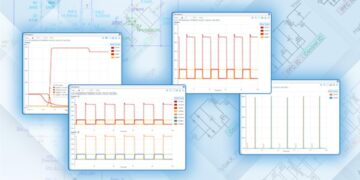
When people call the supply chain situation in the electronics industry a “crisis,” they are probably not that far off the mark. There is a supply chain disaster with rolling shortages across component categories. This started with the capacitor shortage beginning in 2018, which became problematic again in 2020 after briefly subsiding in 2019. Then the shortages rolled over to semiconductors and connectors, and it is difficult to see when there will be any relief.
Companies have had to get creative to ensure they can locate and place enough parts to ensure tier projected manufacturing volume can be produced. Unfortunately, as we are in a time of shortage, companies are dealing with electronic component allocation. In this article, we’ll give an update on the state of allocation as 2022 begins and how it relates to projected lead times, as well as how it affects the individual designer.
Demand is Driving Electronic Component Allocation
Everyone from the big Tier 1 manufacturers to individual designers knows that component shortages are a pain to deal with, and the current period beginning in 2022 seems especially acute. Despite not traditionally being massively popular, components that have gone out of stock have long lead times stretching up to 52 weeks or longer for some part numbers. The system is imbalanced due to higher-than-normal demand; how do manufacturers deal with these problems of supply-demand imbalance?
Manufacturers use a practice called “allocation” to determine who will receive stocks of components as part of their standard order cycles. Suppose an OEM requires 100k units of a particular semiconductor each month; in times of shortage, the manufacturer may allocate only a fraction of the order to this OEM. The idea is to spread existing stock to multiple customers to ensure everyone has something they can put into their products. The detrimental effects of allocation are reflected in the growth rates of major distributors, as indicated in a recent EPSNews survey.
On the manufacturer side, manufacturers are forced to institute strict order practices to ensure they can properly allocate components in the most efficient manner possible:
- Manufacturers may stop providing quotes or accepting orders for allocated parts
- Manufacturers may only partially fulfill orders or extend delivery dates without notice
- Manufacturers are marking orders NCNR (non-cancellable non-returnable)
- Manufacturers are providing small orders to key distributors only to try and break up lead times into smaller chunks
On the customer side, the practice of allocation, and long lead times in general, encourages practices like double ordering. Back in 2018, when the industry was in the depth of a capacitor shortage, results from a survey conducted by Morgan Stanley show that double ordering hit an all-time high by mid-year. As a result, semiconductor vendors are instituting NCNR terms on purchase orders to discourage double-ordering because it distorts the equitable allocation of components. The end result is terrible for OEMs and designers; they now have to implement complex sourcing strategies with multiple equivalent parts and design variants to ensure they can get to market with the required quantities.
Lead Time in Numbers
To illustrate the breadth and depth of current lead times, we can compare pre-COVID with post-COVID periods. Average lead times for out-of-stock were anywhere from 12-16 weeks in 2019. Such a situation is manageable and may not require the institution of electronic component allocation practices. According to Jabil, as of the end of 2021, average lead times have risen to 40 weeks for common semiconductors and 52 weeks for MCUs, some ASICs, and other high-end chips. The Electronics Components Industry Association (ECIA) expects lead times to continue growing in 2023.
Data from Avnet’s Abacus service (current as of February 2022) provides a better picture of the breadth of shortages and lead times across the supply chain. The table below summarizes lead time data for multiple parts categories.
| Component type | Lead time (weeks) |
| Semiconductors | 40-52+ |
| Connectors | 12-20 |
| Capacitors | 16-52+ |
| Resistors | 10-34 |
| Other passives | As high as 52+ |
| SMD inductors | 10-38 |
| Other inductive components | 8-80 |
| Power modules | 12-48 |
| Electromechanicals | As high as 52+ |
Final Guidance
In the short term, don’t expect the typical lead time for at-risk components to magically split in half. Although semiconductor manufacturers are making efforts to deliver small batches to distributors, these are quickly being bought out locally and abroad. As is well known, this won’t subside until demand subsides, which is not expected to occur to the extent needed to reduce lead times to reasonable levels. Instead, we have to wait for new manufacturing capacity, which we can’t expect to come online until 2023. One can speculate on the state of the supply chain reaching out to 2024, where both consumer demand and excess supply become imbalanced again, and we reach a state of surplus.
Until the cyclical nature of the electronics supply chain shifts back to the surplus side, expect electronic component allocation to continue to the major OEMs, Tier 1’s, distributors, and EMS companies. For the individual designer, this reinforces the need to get creative with a design and sourcing strategy, possibly going so far as to pre-order components for customers and plan for multiple design variants.
When you need to find footprints, application notes, and alternative parts to help you deal with electronic component allocation problems, you can find the components you need with the parts search features in Ultra Librarian. The Ultra Librarian platform gives you access to PCB footprints, technical data, and ECAD/MCAD models alongside sourcing information to help you stay ahead of supply chain volatility. All ECAD data you’ll find on Ultra Librarian is compatible with popular ECAD applications and is verified by component manufacturers to help streamline your designing process.
Working with Ultra Librarian sets up your team for success to ensure streamlined and error-free design, production, and sourcing. Register today for free.








